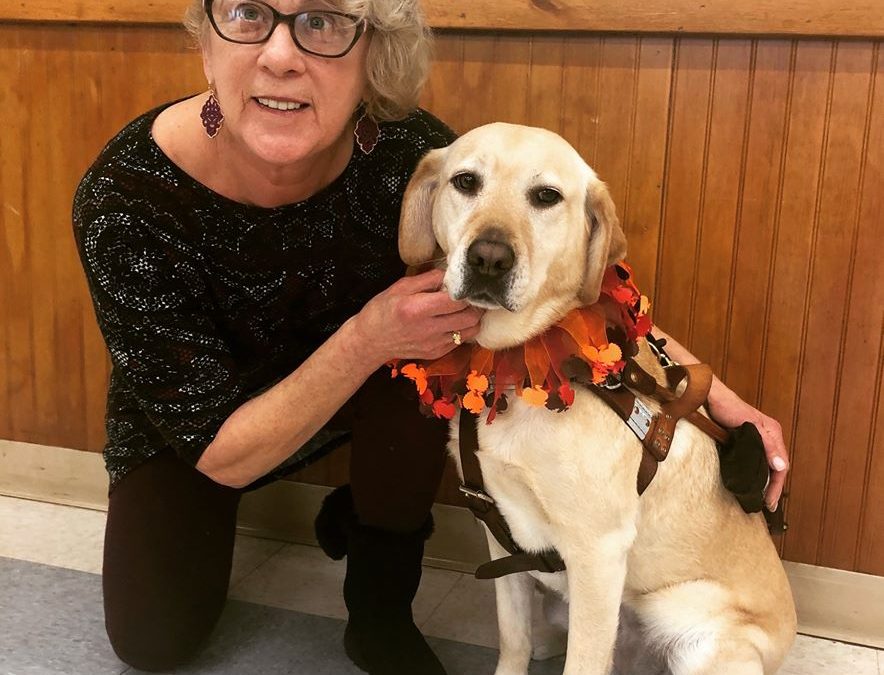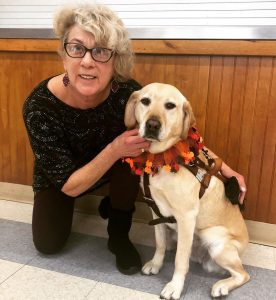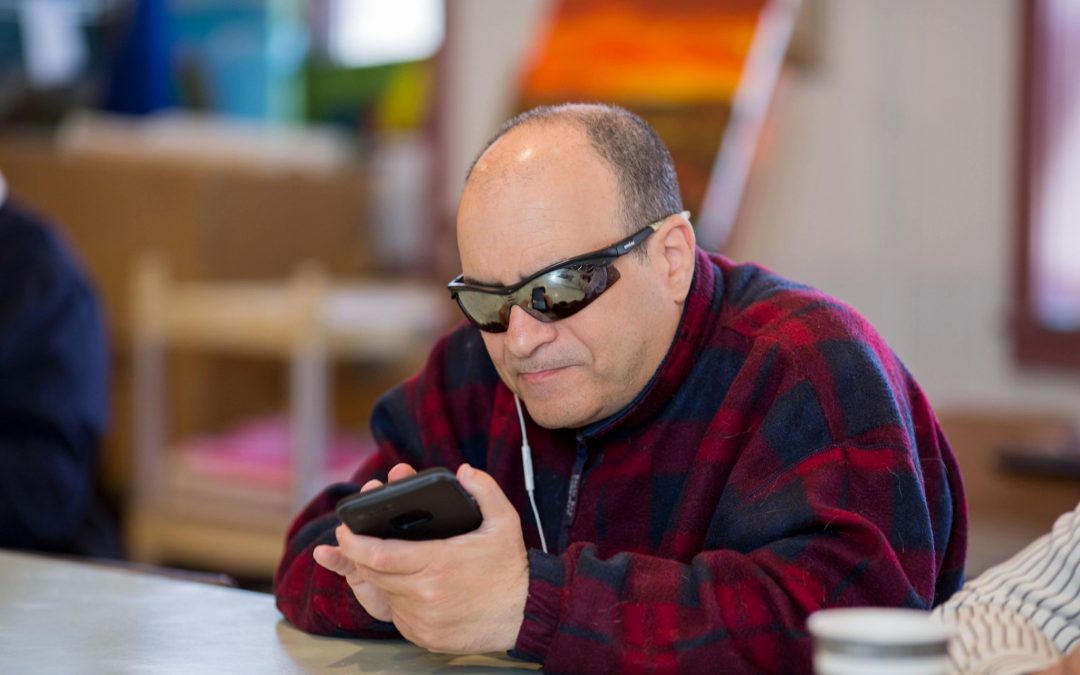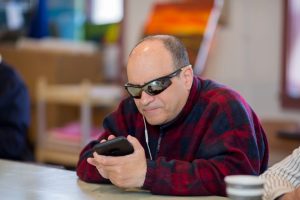by admin | Dec 1, 2019 | Blog, News
Continuous stress and elevated cortisol levels have been shown to negatively impact the eye and brain due to autonomic nervous system imbalance and vascular deregulation. (Click article link for detailed information)
Glaucoma, for example, is an eye condition damaging the optic nerve, the health of which is vital for good vision. This damage is often caused by an abnormally high pressure in your eye, and the pressure tends to be higher due to elevated cortisol (stress hormone) level.
What can you do about lowering stress? We recommend exercising, doing some yoga and meditating!
At Vision Loss Alliance, we offer several fitness and movement courses for our Health and Wellness Program participants.
Our Yoga class is aimed to help our students:
1. gain balance – when vision loss occurs, since visual cues are no longer available, balance tends to suffer;
2. learn to meditate – to reap all the benefits of quieting one’s mind;
3. get exercise – low-impact exercise is a great way to lower cortisol levels and release endorphins!
Please consider donating to our programs on #givingTuesday, so we can continue to offer programs for the health and well being of people in our community who are blind or have low vision!
by admin | Nov 30, 2019 | Blog, News
Weekends are a great time to relax. Have you considered meditation?
Several studies have shown that meditation can lower intraocular pressure and improve quality of life for people who have glaucoma by lowering stress hormones like cortisol. Click the link for the article explaining the connection.
Here at Vision Loss Alliance of New Jersey, we incorporate meditation into several classes in our Wellness Program. It’s very effective in creating a mind-body connection, lowering stress, and helping with an overall sense of well-being, not to mention the health benefits of lowering eye pressure.
Please consider our nonprofit on #givingTuesday so that we can continue offering a wide array of programs to help people with vision loss and blindness.
by admin | Nov 24, 2019 | Blog, News
It’s no secret that poor diet is bad for your health. Did you know it can also lead to vision loss? This helpful article explains the link.
Make sure to eat lots of leafy greens, citrus fruits, orange fruits and vegetables, beans and cold-water fish for a well-rounded diet to keep your eyes well nourished!

by admin | Nov 23, 2019 | Blog, News
 In our Healthy Options class, students learn how to peel, chop, dice, and puree their way to preparing creative snacks, easy meals and health-conscious desserts by using whole, natural foods & learning about the health benefits they provide.
In our Healthy Options class, students learn how to peel, chop, dice, and puree their way to preparing creative snacks, easy meals and health-conscious desserts by using whole, natural foods & learning about the health benefits they provide.
When vision loss occurs, it’s more likely individuals choose packaged and processed foods simply because they’re easy to prepare and cook. This class aims to offer healthier food options, while teaching short cuts, adaptive strategies, kitchen safety, and use of various kitchen appliances that save time and effort. Students get to work on re-gaining their independence, learn kitchen skills, and get well-rounded tactile experience.
Do you know someone who could benefit from taking our Healthy Options class? Have them get in touch with us for information about our next session!

by admin | Nov 22, 2019 | Blog, News
 Heather is such a cute puppy, especially in her Thanksgiving outfit that you can’t help but want to pet her… but remember that you shouldn’t! 🐶
Heather is such a cute puppy, especially in her Thanksgiving outfit that you can’t help but want to pet her… but remember that you shouldn’t! 🐶
She is a guide dog, trained by The Seeing Eye, Inc., to keep her owner, Lori, safe. When you see them out and about, Heather is working, and should not be distracted with talk, touch or treats.
Some helpful pointers for when you see a person with a guide dog:
Speak to the handler, not the dog. Some handlers will allow petting, but be sure to ask before doing so. If allowed, don’t pat the dog on the head; stroke the dog on the shoulder area.
If the handler says no when you ask to pet the dog, don’t be offended. The dog (or handler) might be having a bad day, or they might be in a hurry – you wouldn’t be offended if the person said no to you petting their white cane, would you?

by admin | Nov 19, 2019 | Blog, News

Technology highlight for Tech Tuesday. What is Apple’s VoiceOver?
VoiceOver is a gesture-based screen reader that lets you enjoy using iPhone/iPad even if you don’t see the screen. Hear a description of everything happening on your screen, from battery level to who’s calling to which app your finger is on. You can also adjust the speaking rate and pitch to suit you.
How to set up: In settings, go to “accessibility” and click on VoiceOver at the top. Toggle it to “on”. You can also adjust everything from verbosity to commands.
How to use: With VoiceOver enabled, just triple-click the Home button (or the side button on iPhone X or later) to access it wherever you are in iOS.
Find out more about different types of apps and accessibility features by joining our 13-week Technology Program! Call Linda Groszew at 973-627-0055 ext. 1312.






